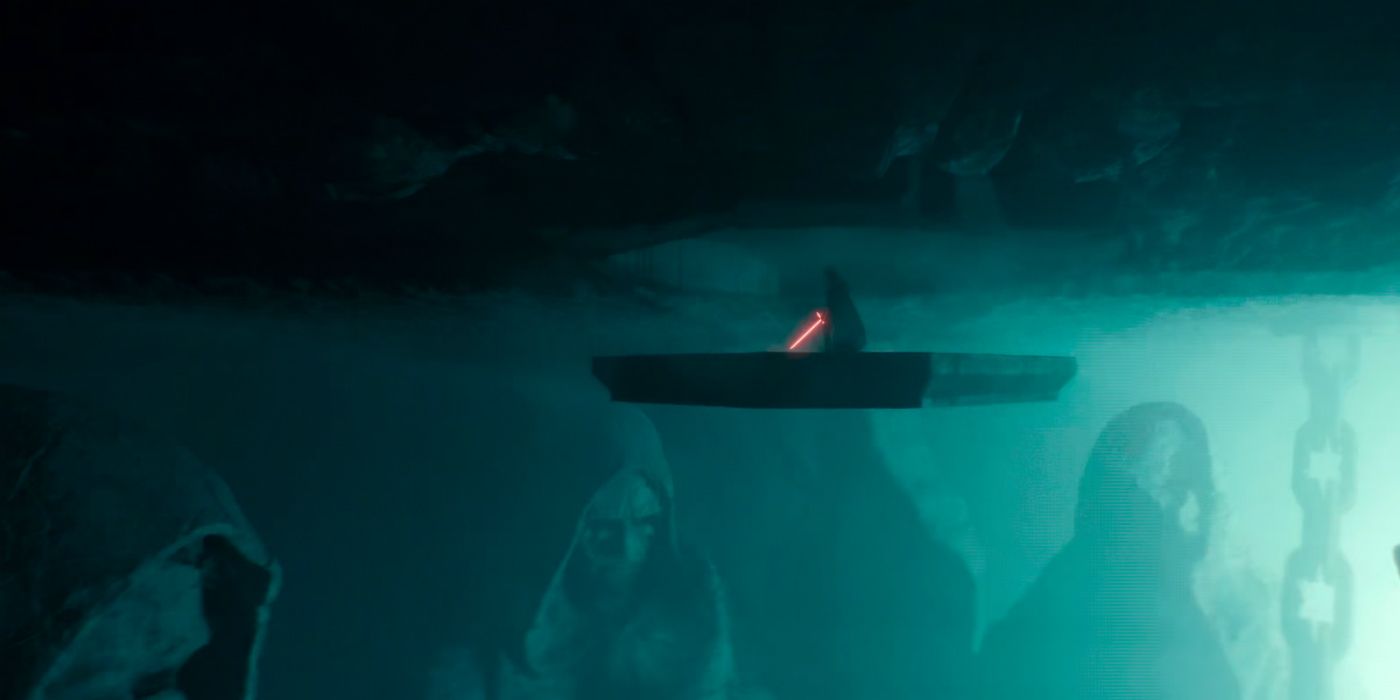Instead of featuring the Sith homeworld of Moraband, Star Wars: The Rise of Skywalker introduced Exegol, a new Sith planet. The Sith, while broadly conceived by George Lucas in the 1970s, were not established or properly named in the Star Wars films until the prequel trilogy. Although they then went on to be featured prominently in Expanded Universe stories as some of the franchise's quintessential antagonists, Disney's sequel trilogy, set in the era of the New Republic, instead chooses to focus mostly on Kylo Ren and the First Order, with Darth Sidious only being briefly mentioned in Star Wars: The Last Jedi before reappearing in full force in The Rise of Skywalker.
After being overthrown by Luke Skywalker and Darth Vader in Return of the Jedi during the destruction of the Death Star II, Palpatine survives by casting his consciousness into a clone body waiting in the Sith Citadel on Exegol. From there, he covertly orchestrates the motions of Supreme Leader Snoke and the First Order, while also secretly leading the Sith Eternal in preparing the unprecedented navy of the Final Order. Like the Jedi that Luke and Rey represent, this small, hidden contingent of dark side followers is only a shade of what the Sith once were, after being both decimated by the Jedi and self-restricted by Darth Bane's Rule of Two.
The Rise of Skywalker shows Exegol to be a planet with an exceptionally strong connection to the dark side of the Force, but a similar and more iconic Sith world, Moraband (also known as Korriban), already existed. The sequel trilogy by-and-large preferred to create new planets rather than use established ones, with Ilum's Starkiller Base conversion and brief trips by main characters to Tatooine and Mustafar being the only notable retreads. Practically speaking, this simply allowed for more creative freedom in their depictions. However, characters' in-universe decisions would likely also have been influenced by Exegol's lack of history; given that Palpatine was not only in hiding but also engaged in sinister experiments cloning both himself and Snoke, Moraband's premier place among dark side-aligned planets would likely have invited too much suspicion. Even though it was still relatively arcane, Exegol, situated in the Unknown Regions (as opposed to Moraband's place in the Outer Rim Territories), was even farther removed and less conspicuous.
This is more a case of lore addition than lore replacement, because Moraband still exists in Star Wars canon, as it is visited in The Clone Wars. Importantly, unlike Moraband, which was purported to be the original homeworld of the Sith, Exegol is specifically described as a Sith colony that was used for temporary habitations, so it isn't strictly taking the former's place. Instead, Palpatine's use of it over the Sith homeworld serves to underline the fact that he is backed into a corner, with his cloned body failing and the Final Order serving as a dangerous Hail Mary.
Creating Exegol is in keeping with Disney's jettisoning of much of the previously established canon under the Star Wars Legends label in order to create a more accessible universe with less baggage. Using Moraband, in particular, would have been complicated by the fact that it is intrinsically linked to, among other things, the Sith species (distinct from the religious order), which no longer seems to be canon, currently featured only in the MMORPG Star Wars: The Old Republic, which is the sole remaining property still telling Legends stories. Clearly, Moraband can be and has been repurposed in the new canon without certain aspects of its Legends history, but with all of the plates that Star Wars: The Rise of Skywalker had spinning to bring the Skywalker saga to an end, it is understandable that the filmmakers would avoid meticulously retooling an important existing planet when they could simply create a new one.


